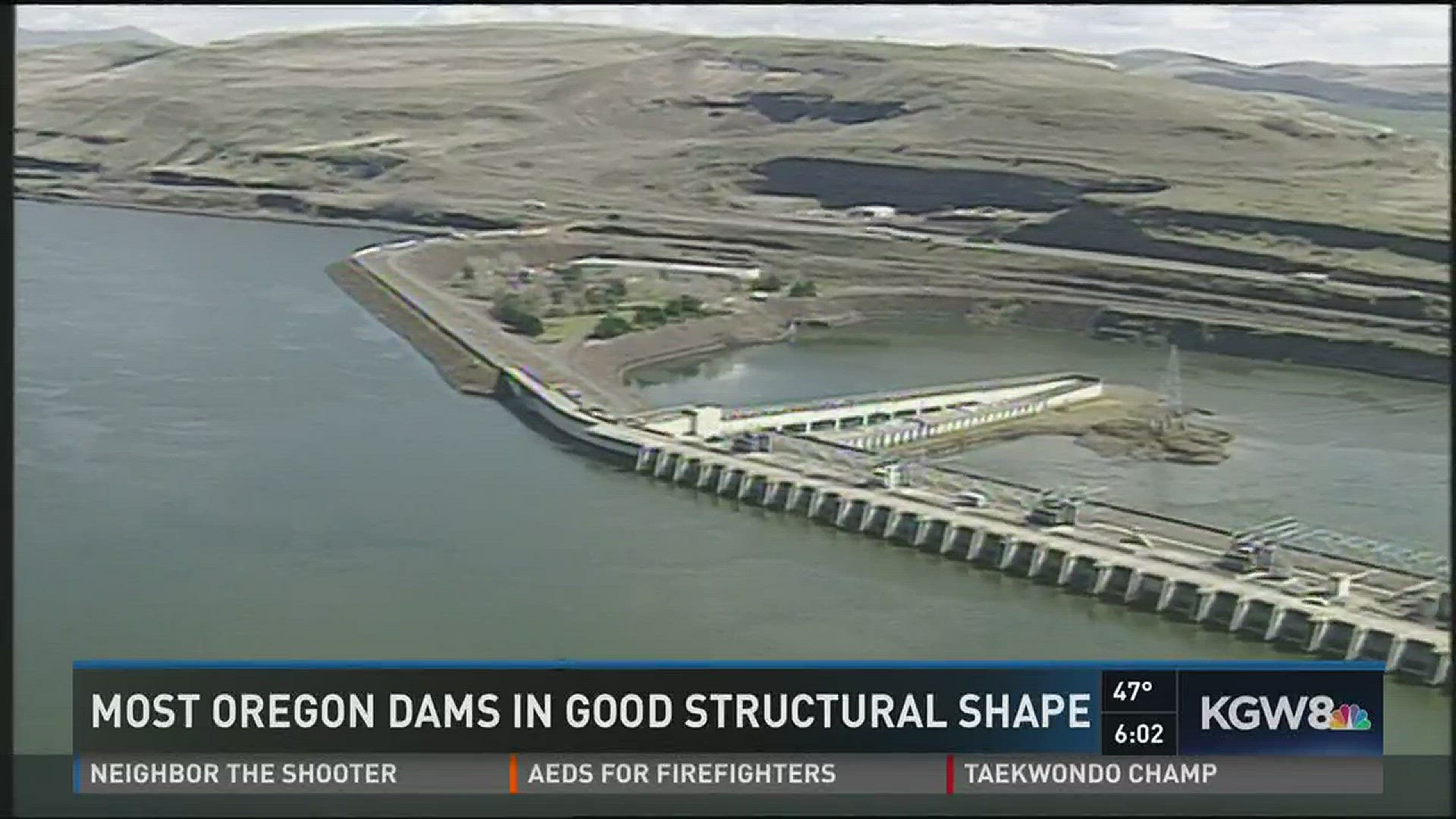Oregon considers seven dams across the state to be in “unsatisfactory" condition.
That means those dams are more closely inspected, and could be declared unsafe if repairs aren’t made, said Diana Enright, spokeswoman for the Oregon Water Resources Department.
The state has been getting lots of questions about dam safety, Enright said, as a slow disaster unfolds at Oroville Dam in California, where nearly 200,000 people have been evacuated due to the threat of a breach and uncontrolled flooding.
Officials at the Association of State Dam Safety say thousands of the nation’s 84,000 regulated dams have the potential to fail.
States have permitting, inspection and enforcement authority for about 70 percent of those dams.
Inspection reports aren’t routinely released to the public, but Enright provided a list of troubled Oregon dams. They are:
- Big Creek Reservoir # 1 (Lower) Dam, in Lincoln County (21 feet high).
- Big Creek Reservoir #2 (Upper) Dam in Lincoln County (56 feet high).
- Crowley Dam in Malheur County (90 feet high)
- Willow Creek 3 in Malheur County (110 feet high)
- Ferry Creek Dam in Curry County (65 feet high).
- McMullen Dam in Josephine County (33 feet high).
- Johnson Creek Dam in Crook County (44 feet high).
While it’s hard to find out which dams have the potential to fail, a federal database lists those that would have catastrophic consequences if they did.
The U.S. Army Corps of Engineers maintains the public National Inventory of Dams database.
It classifies dams as “high hazard potential,” meaning dam failure would result in the loss of at least one human life; or “significant hazard potential,” meaning dam failure could result in the loss of at least one human life, and likely would result in property or environmental destruction.
Other dams are classified as “low hazard,” and some are “undetermined.”
Detroit Lake in Linn County, which supplies Salem’s drinking water, is a high hazard dam.
It’s one of 16 Oregon dams operated by the U.S. Army Corps of Engineers.
Federally operated dams across the country are in good condition, the Association of State Dam Safety Officials said.
“Public safety is our first priority,” said Michelle Helms, Corps spokeswoman. “As part of all that we have a rigorous inspection and monitoring program.”
Oregon has a total of 869 dams in the NID database.
Of those, 150 are rated high hazard potential and 160 are rated significant hazard potential.
Twenty-four of those high hazard dams, and 93 of the significant hazard dams, are operating without required emergency action plans, documents that lay out everything from inundation maps to notification flowcharts to emergency response duties.
That means 38 percent of Oregon dams near populated areas lack emergency plans.
All seven Oregon dams deemed “unsatisfactory” for safety are high hazard dams.
In Marion and Polk counties, high hazard dams include Franzen Reservoir, Silver Creek Dam, Croft Reservoir and Mercer Reservoir.
Sixty-eight percent of Oregon’s dams are privately owned. Fifty-nine percent are used for irrigation. Most of the state’s dams were built between 1950 and 1969.
Oregon’s highest dams
California’s Oroville Dam, at 770 feet, is the highest dam in the United States. Here’s how Oregon’s top 10 compare:
Cougar Reservoir 519 feet
Detroit Reservoir 450 feet
Round Butte Dam 440 feet
Owyhee Lake 417 feet
Brownlee Dam 400 feet
Green Peter Reservoir 378 feet
Lost Creek Reservoir 345 feet
William L. Jess 345 feet
Hills Creek Reservoir 341 feet
Hells Canyon Dam 320 feet
tloew@statesmanjournal.com, 503-399-6779 or follow at Twitter.com/Tracy_Loew

